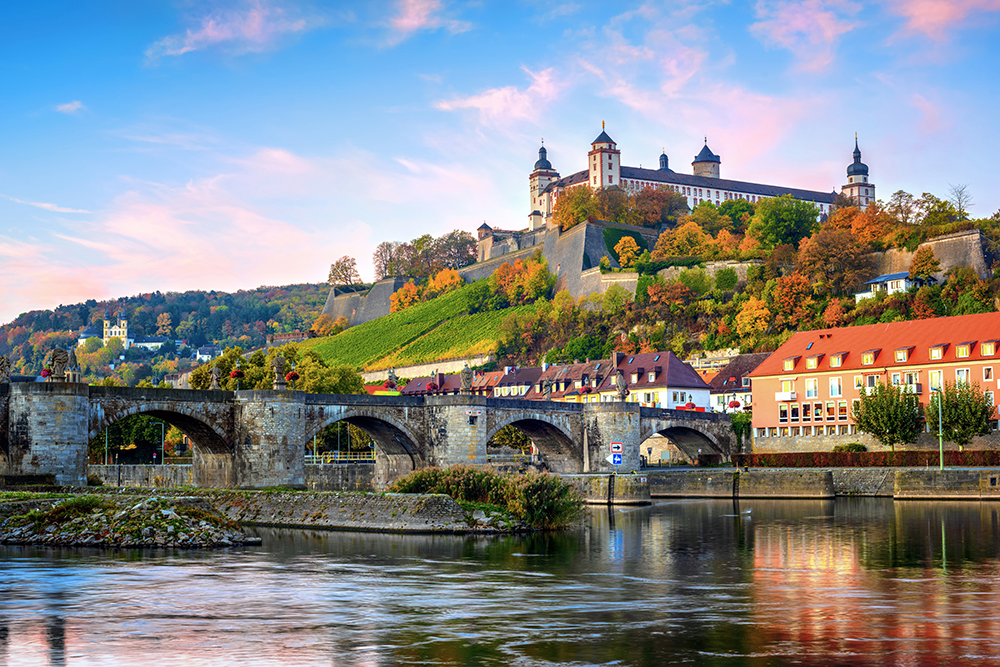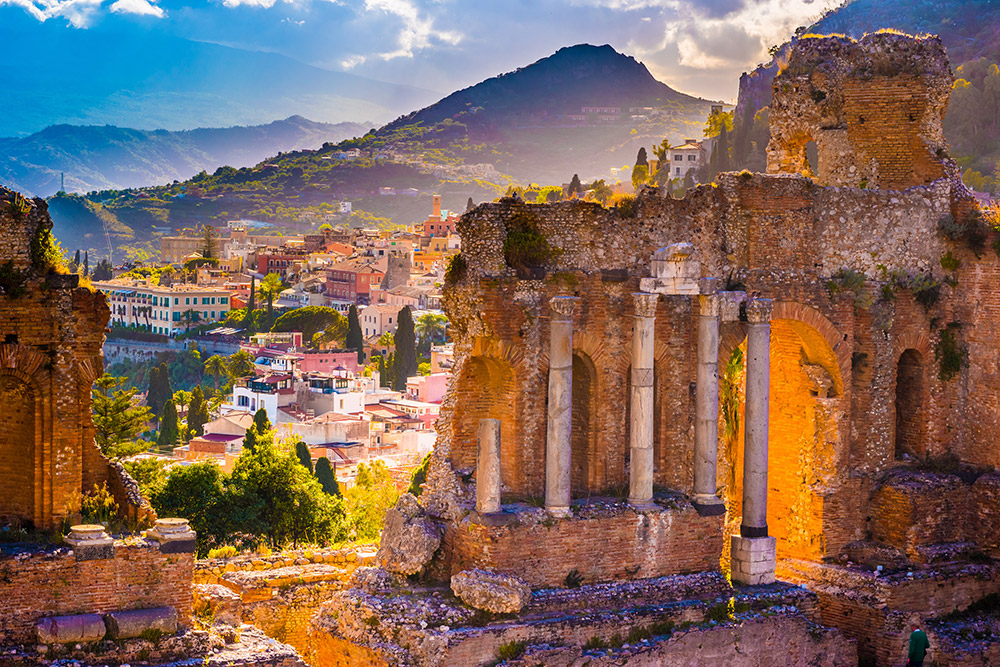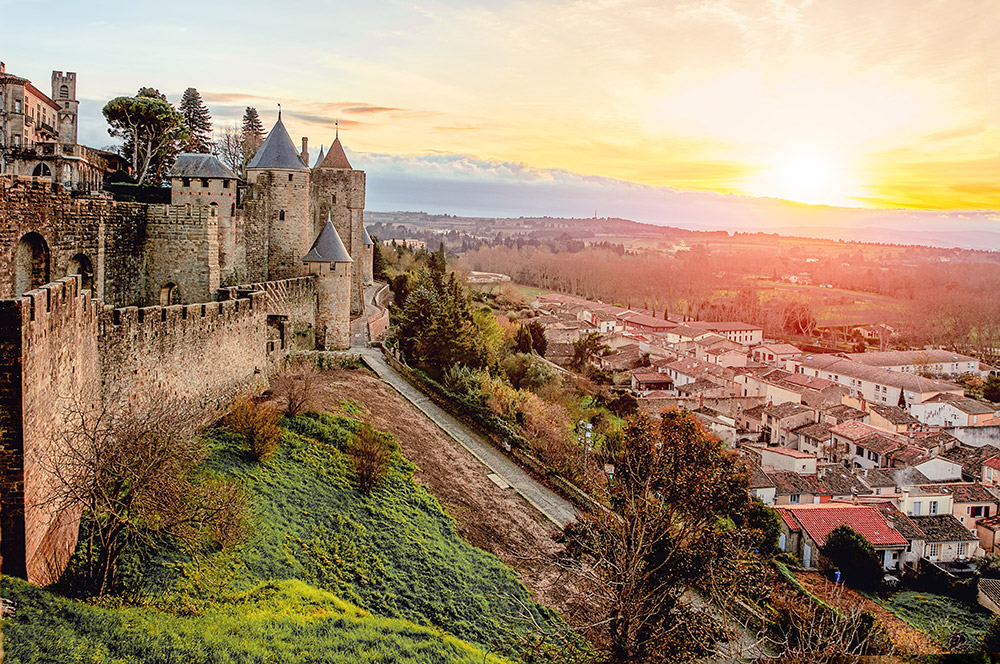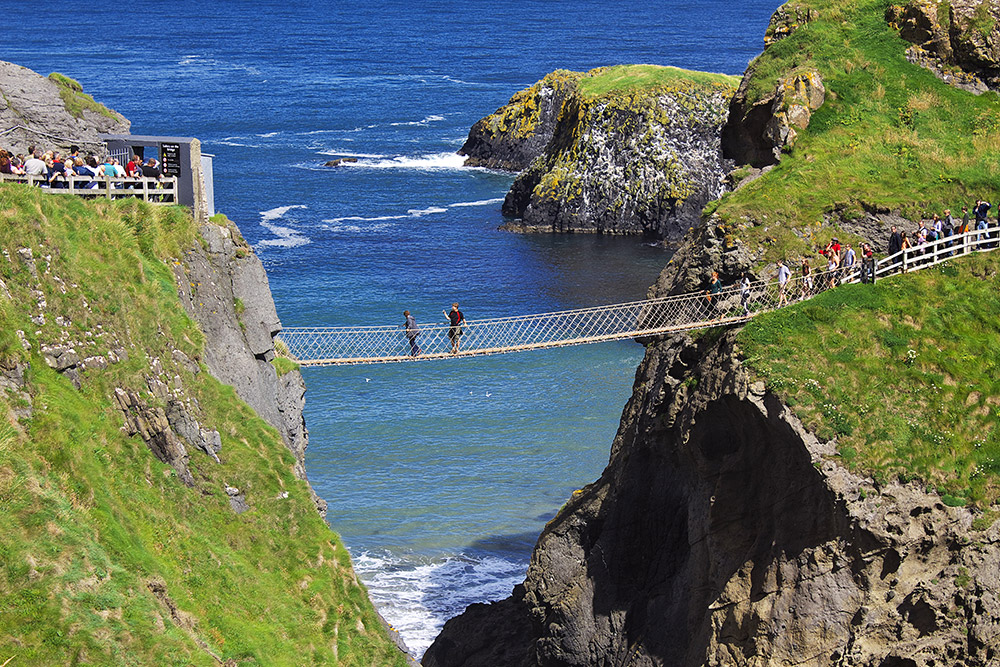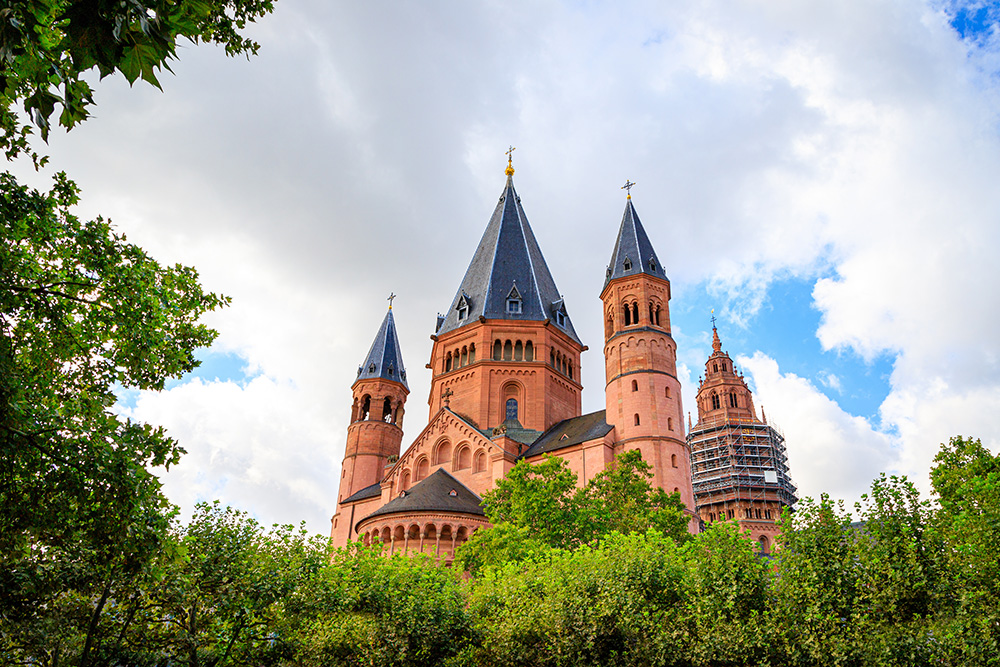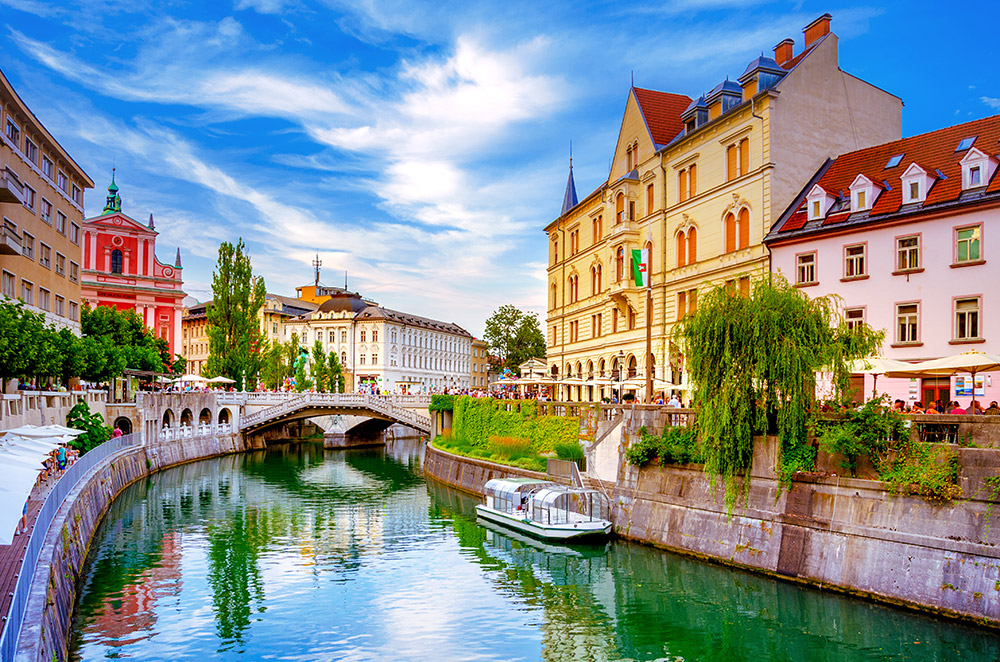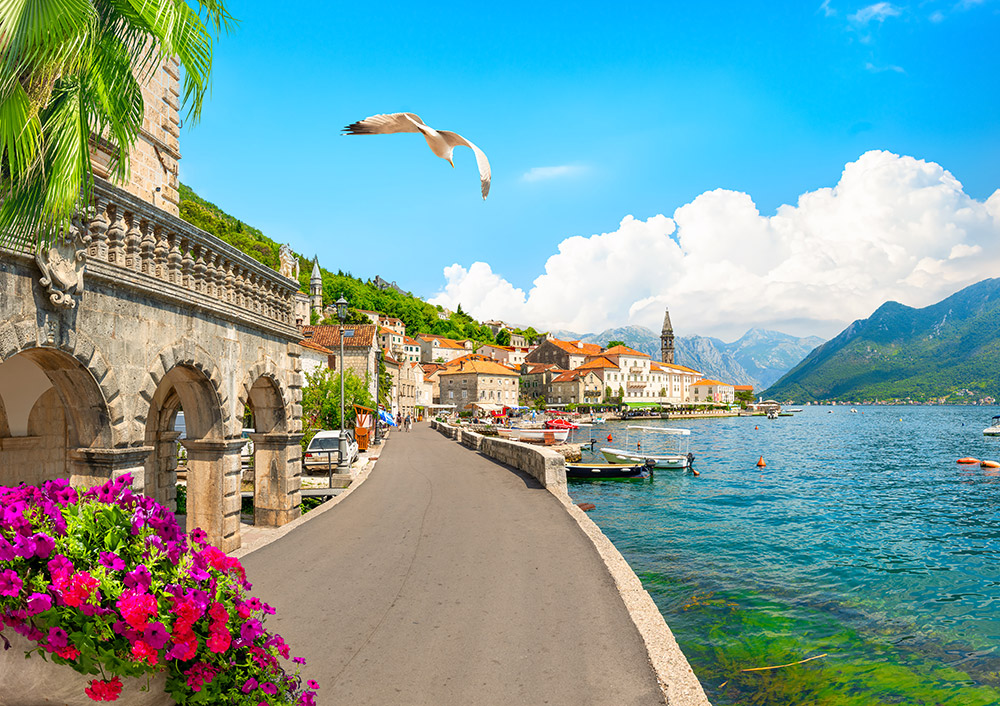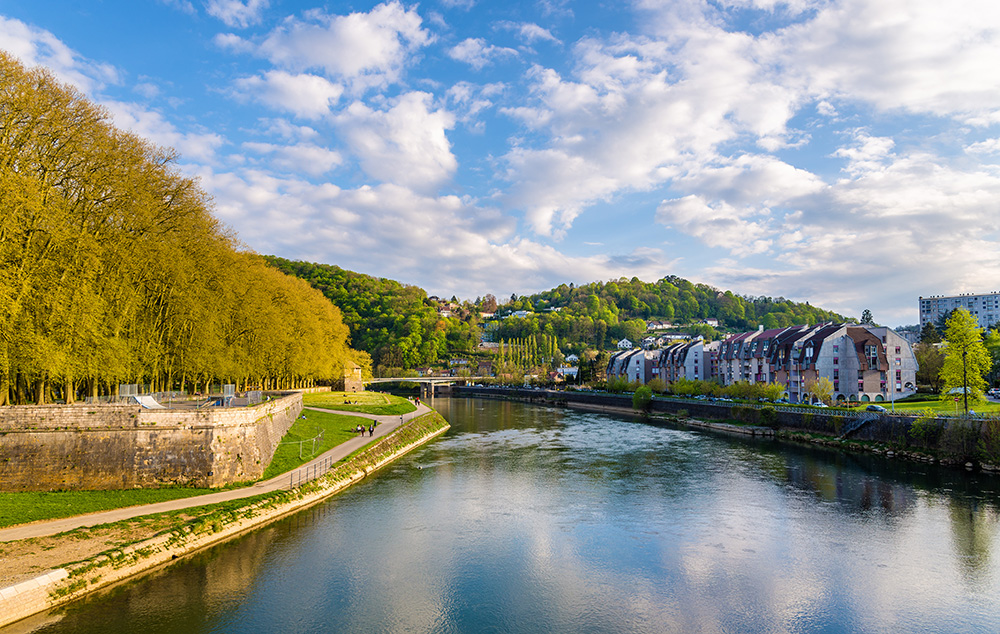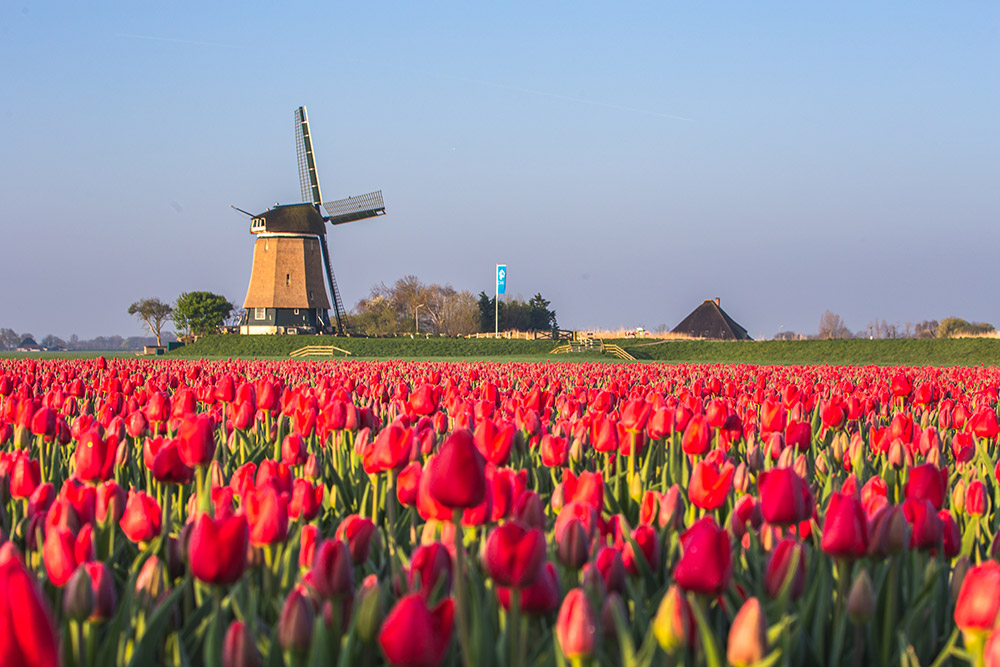Welcome to the Romantic Road! Established in the 1950s, this scenic road winds its way along an ancient trade route, connecting historic towns. This picturesque journey, which has become a popular tourist destination, begins in Wertheim and takes you through the heart of Germany, revealing a blend of medieval towns, castles, legends, and enchanting landscapes.
Popular itinerary to the Romantic Road in Germany:
The route will lead to Würzburg, and, from there to Tauberbischofsheim and Lauda-Königshofen, revealing hidden gems like the charming spa town of Bad Mergentheim and the vineyard-covered hills of Röttingen.
Rothenburg ob der Tauber is like living history with its well-preserved medieval architecture. From there, your journey continues to Feuchtwangen, Dinkelsbühl, and Nordlingen, each boasting medieval fortifications and rich histories. The route then winds through the spectacular landscape towards Harburg, dominated by its hilltop castle, and Donauwörth, with its fusion of Bavarian and Swabian cultures. Augsburg, renowned for its Renaissance art and culture, offers a vibrant urban contrast to the charm of the countryside.
Continuing on the route, the colorful houses of Landsberg am Lech and the serene beauty of Rothenbach add diversity to the route, leading to the legendary castle: Neuschwanstein Castle, which inspired Walt Disney’s iconic fairytale castle.
This suggested itinerary spans 8 days, offering a relaxed pace for your journey. Beginning in Frankfurt and concluding in Munich, the route covers approximately 435 miles.
Here is a detailed list of recommended points of interest:
Day 1: Frankfurt am Main to Wertheim
Upon arriving in Frankfurt, embark on a 56-mile journey via Highway 3 to the charming town of Wertheim. This picturesque town, situated at the confluence of the Main and Tauber rivers, boasts a rich history dating back to the medieval era and serves as a bustling center of commerce. The impressive Wertheim Castle, a stronghold with centuries of history, is a testament to the medieval heritage of the city. The castle features remarkable architectural grandeur and commanding views of the skyline. Stroll along the cobblestone streets lined with timber-framed houses, each telling a tale of times gone by.
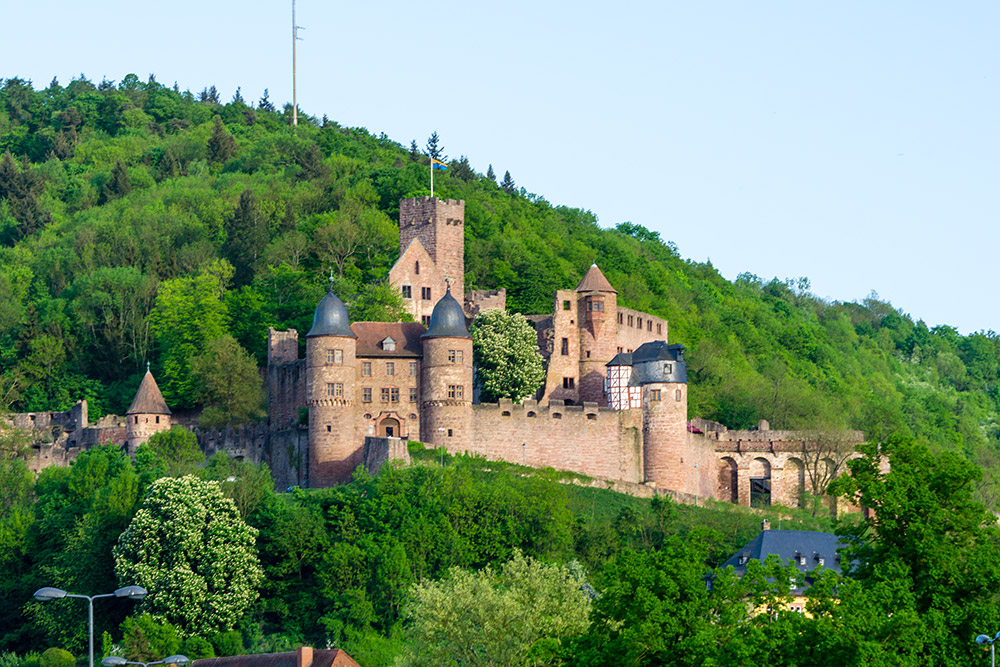
Continue your journey along Highway 3 for approximately 25 miles to the city of Würzburg.
Spend the night in Würzburg.
Day 2: Würzburg
From the heights of Marienberg Fortress, enjoy a sweeping panorama of Würzburg, with its roofs, spires, and the Main River winding through the landscape. The Alte Mainbrücke (Old Main Bridge), adorned with 12 sculptures, is an extraordinary gateway to the city. Gazing from the bridge, you’ll see the commanding Marienberg Fortress that stands atop a vine-covered hill, a symbol of the region’s renowned viticulture. The fortress’s roots lie in its 8th century church, expanding over the years into the grand fortress it is today.
Explore the Town Hall, an exquisite Romanesque-style building boasting a pointed tower with a clock and sundial. The structure includes an external Renaissance-style balcony. Nearby, the baroque Vierohrenbrunnen Fountain, known as the Four-Eared Fountain, features four dolphins symbolizing wisdom, justice, patience, and strength. In the central Marktplatz, discover the Obelisk Fountain adorned with figurative details. The square is also home to a bustling market and the Marienkapelle Church.
The main thoroughfare of the city leads to the entrance of the Gothic style Würzburg Cathedral (Wurzburgerdom). The cathedral’s interior is rich in artistic elements, and its large windows illuminate the white space in contrast to the warm-toned stone floor. Also known as Kiliansdom, after Saint Kilian, the cathedral leads you to the Residenz Palace and its magnificent gardens, a UNESCO World Heritage site.
Spend the night in Würzburg.
Day 3: From Würzburg to Röttingen
Take a scenic drive along Highway 81 for about 25 miles until you reach the historic town of Tauberbischofsheim, nestled along the Tauber River. This town, with its medieval architecture and rich cultural heritage, is steeped in history and charm and is lovely to explore. At its heart stands the impressive St. Martin’s Church, an extraordinary example of Gothic architecture. The town’s tranquil atmosphere, coupled with picturesque surroundings, welcomes visitors with a delightful blend of history, scenic beauty, and hospitable ambiance.
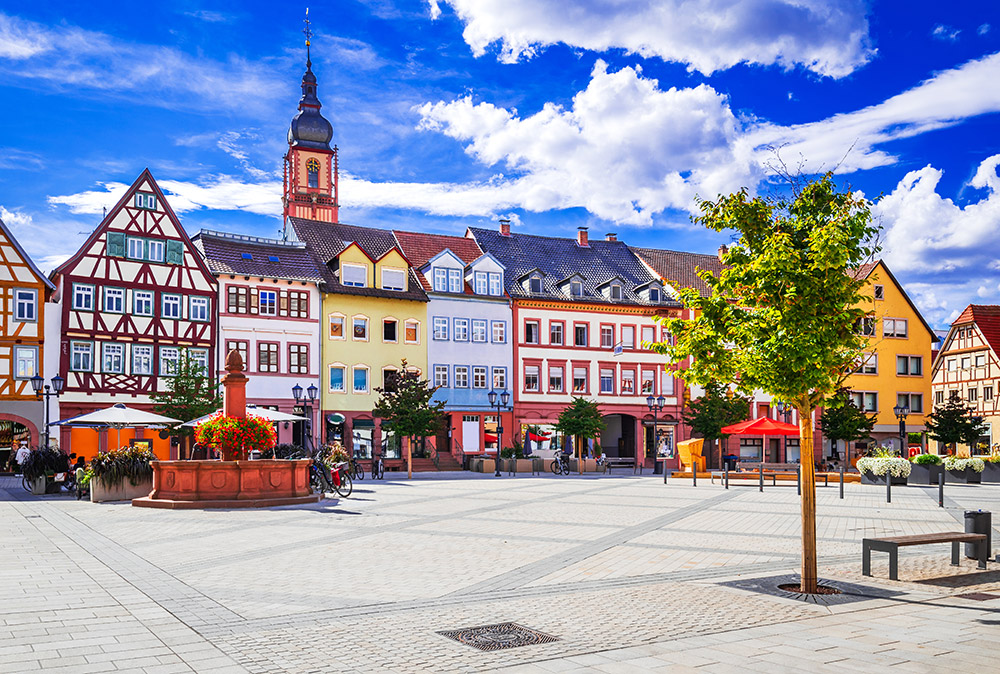
Continuing on Highway 290 for approximately 6 miles, you’ll reach Lauda-Königshofen, a historic town surrounded by the beautiful landscapes of Franconia. This heritage-rich town with medieval architecture and modern charm offers a glimpse into its history through landmarks like the impressive St. Martin’s Church and medieval fortress remnants.
A short 7.5-mile drive on Highway 290 will lead you to Bad Mergentheim, a picturesque town renowned for its historical significance and therapeutic spa facilities. Nestled amidst the stunning landscapes of the Tauber Valley, this charming destination boasts a rich medieval heritage. The focal point of the town is the beautiful Deutschordensmuseum, housed in the Teutonic Order Castle, once the residence of the Grand Master of the Teutonic Order.
Continuing on Route 19 and Road 2251, a 15.5-mile stretch will take you to Röttingen, a lovely town surrounded by vineyard-covered hills, emanating a tranquil ambiance and rich historical charm. Röttingen boasts well-preserved medieval walls and towers and charming streets adorned with timber-framed houses.
Driving along Route 2268 for approximately 18.5 miles will bring you to Rothenburg ob der Tauber to spend the night.
Day 4: Rothenburg ob der Tauber
Today will be dedicated to Rothenburg ob der Tauber, a city founded in the 13th century. As a result of its strategic location, it evolved into an imperial free city and was later constructed as a fortress town. The impressive fortifications of the city, including its intact walls and complementing towers, are evidence of its rich history, transforming Rothenburg ob der Tauber into an open-air museum of medieval times.
At the heart of the old town lies the Market Square (Marktplatz), featuring the stunning Town Hall (Rathaus) and the St. George Fountain (Georgsbrunnen). The city walls are open for a leisurely stroll, offering impressive views of both the old town and the surrounding valleys. The impressive St. James’s Church (St. Jakobskirche) showcases extraordinary altars. The city gates, impressive in their own right, invite visitors to discover remarkable architecture immersed in the impressive urban landscape.
Visit the Christmas Museum (Weihnachtsmuseum) and the Medieval Crime Museum (Kriminalmuseum) to explore the city’s stories. For an entertaining and enlightening tour of the city’s history, join the “Night Watchman Tour,” where humorous and informative narratives bring the town’s history to life. Discover moments of serenity in the Castle Gardens (Burggarten) or the English Garden (Englischer Garten), offering peaceful retreats amidst the town’s enchanting beauty.
Spend the night in Rothenburg ob der Tauber.
Day 5: Rothenburg to Harburg
Drive along Route 7 for approximately 22 miles until you arrive at the lovely town of Feuchtwangen, which blends medieval architecture with Bavarian charm. The town’s focal point is the former Benedictine monastery, Klosterkirche, an impressive Romanesque-style church. Stroll along the lovely cobblestone streets lined with timber-framed houses.
Continuing for another 22 miles, you’ll reach Dinkelsbühl, renowned for its exceptionally preserved historic center featuring charming cobblestone streets and colorful wooden houses. Surrounded by medieval walls and fortified towers, visit St. George’s Minster, a stunning Gothic church, and the market square, surrounded by centuries-old buildings.
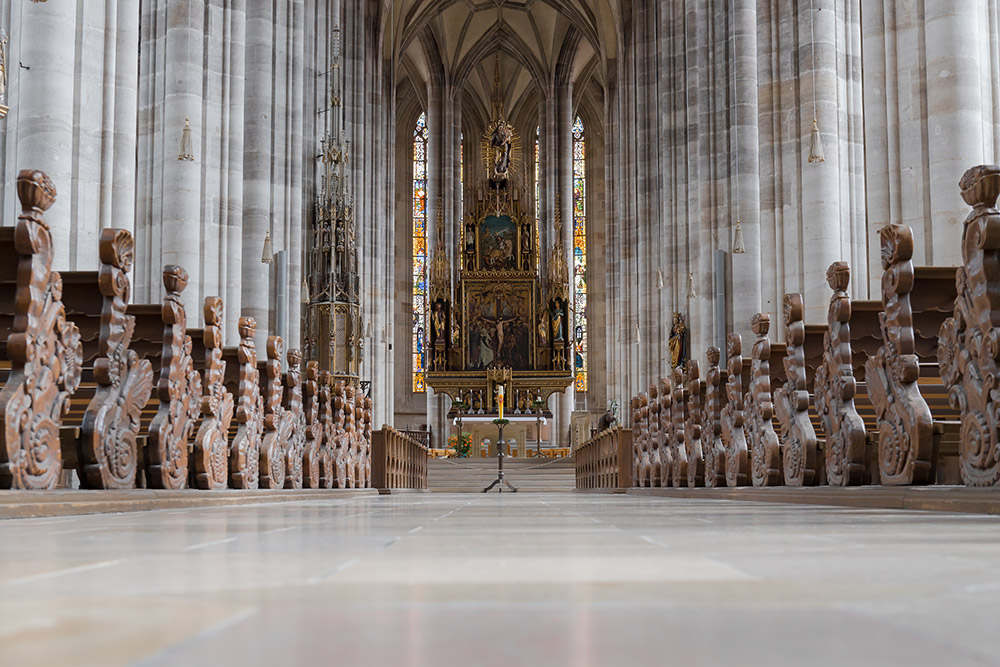
Moving ahead for about 22 miles on Highway 25, you’ll approach Nördlingen, a town nestled within a geological impact crater. This historic Bavarian town is distinguished by well-preserved medieval walls, towers, and enchanting cobbled streets. The heart of Nördlingen is its picturesque market square, surrounded by beautiful Gothic and Renaissance-style buildings. Dominating the skyline is the Daniel Tower, offering panoramic views of the town and its surrounding crater. St. George’s Church houses an impressive astronomical clock. Don’t miss the Bavarian Railway Museum, showcasing an impressive collection of vintage trains, carriages, and railway-related artifacts, providing insight into Germany’s rich railway history. Note that the museum is only open during tourist seasons.
A short drive on Route 25 will lead to Harburg where you will spend the night.
Day 6: From Harburg to Augsburg
Perched atop a hill, Harburg is renowned for its medieval fortress that oversees both the town and the surrounding rural landscape. This fortress, boasting well-preserved architecture dating back over a thousand years, offers a captivating glimpse into medieval life and history. Explore its courtyards, ascend its towers for breathtaking panoramic views, and discover the museum within, showcasing its rich past. The town itself, with its charming streets and a traditional Bavarian ambiance, complements the grandeur of the fortress.
Continuing on Highway 25 for another 10 to 15 minutes, you’ll reach the historic town of Donauwörth, situated at the confluence of the Danube and Wörnitz Rivers. Stroll along its charming streets, lined with colorful houses, and visit Our Lady’s Basilica, an impressive Gothic church adorned with intricate details. The historical center of Donauwörth boasts well-preserved buildings reflecting its vibrant regional trade center history. The town’s bridges offer panoramic views of the merging rivers.
Taking Route 2, a drive of approximately 44 miles leads to Augsburg, one of Germany’s oldest cities. Augsburg boasts a wealth of historical landmarks and architectural treasures. Its centerpiece, the Augsburg Cathedral, is a remarkable example of Romanesque and Gothic architecture, and the Perlach Tower is an important part of its ancient fortifications. Augsburg’s grandeur is further exemplified by the Fuggerei, an impressive 16th-century social housing complex. The Town Hall, graced by its splendid Golden Hall, proudly exhibits the city’s Renaissance splendor. Augsburg’s illustrious history as a trade and artistic hub is evident in its guild houses and the Wasserwirtschaft, a unique water management system.
Spend the night in Augsburg.
Day 7: From Augsburg to Füssen
Today’s journey begins with a scenic drive of approximately 28 miles on Highway 17 toward the town of Landsberg am Lech. This picturesque town, nestled along the Lech River, proudly showcases a heritage that dates back to Roman times. Landsberg’s iconic highlight is its historic old town, characterized by colorful facades, winding cobblestone streets, and the famed Bavarian Gate, a medieval gate that has safeguarded the city throughout the ages.
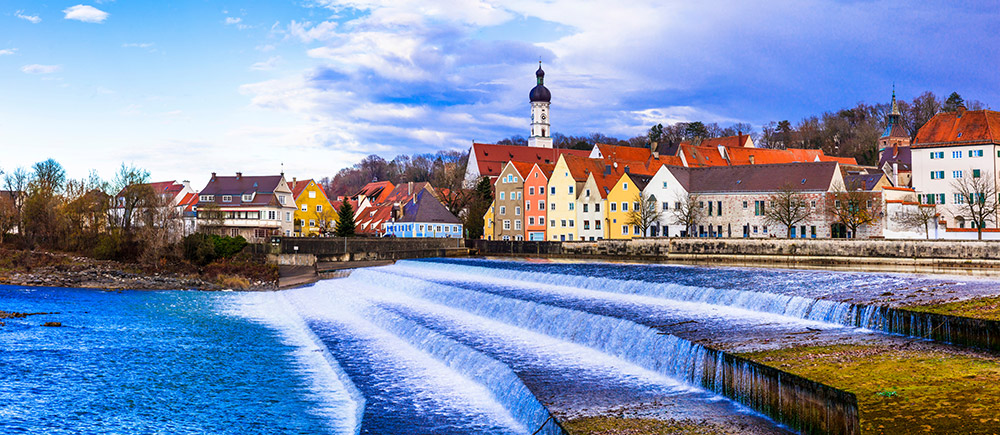
Continuing on Highway 17 for another 28 miles, you’ll arrive at Rottenbuch, a charming town along the romantic route surrounded by picturesque landscapes. This lovely town is renowned for its Baroque-style pilgrimage church, Klosterkirche Rottenbuch, adorned with stunning wall paintings and ornate decorations.
Following Highway 17, which guides your route today, leads to the town of Füssen, approximately 22 miles from Rottenbuch. Füssen lies at the foothills of the Alps and is renowned for its breathtaking scenery and cultural heritage. The town presents a rich history showcased in its medieval old town, featuring charming streets, historical buildings, and Hohes Schloss (High Castle) with its Bavarian Renaissance architecture.
Spend the night in Füssen.
Day 8: From Füssen to Munich
Begin the day with a visit to one of the world’s renowned castles, Neuschwanstein Castle (Schloss Neuschwanstein), located just minutes away from Füssen. The castle, an architectural marvel and a must-visit destination, sits atop a hill in the picturesque Bavarian Alps, providing breathtaking views that inspired Walt Disney’s iconic castle. Designed with influences from medieval legends, the castle is a testament to the romantic vision of King Ludwig II. Explore the inside of the castle with its lavishly adorned rooms, showcasing works of art, embellishments, and decorative arts. The stunning backdrop of the Bavarian Alps and the nearby Alpsee Lake creates an awe-inspiring atmosphere, making the visit to Neuschwanstein an incredible experience of history, art, and breathtaking landscapes.
After exploring the impressive castle, take Highways 17 and 2 for approximately 84 miles, leading to the city of Munich.
